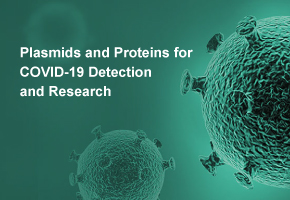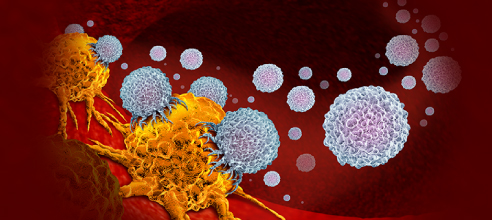The Power of Karyotype Analysis in Understanding Plant Chromosomes: A New Frontier in Genetic Research
In the quest to understand plant biology, the study of chromosomes is essential. Plant chromosomes, which carry the genetic code crucial for growth, adaptation, and reproduction, exhibit significant diversity in both structure and number across species. Among the most effective methods for investigating these genetic blueprints is karyotype analysis, which provides a detailed visualization of chromosomes, aiding researchers in deciphering the complexity of plant genomes. Karyotype analysis not only unveils chromosomal characteristics but also plays a key role in evolutionary biology, plant breeding, and genetic conservation.
The Essential Role of Chromosomes in Plants
Plant chromosomes are located in the nucleus of plant cells and serve as repositories of genetic material in the form of DNA. Unlike animals, plants show a broader variety in chromosome number and structure, with many species exhibiting polyploidy — the presence of multiple sets of chromosomes. This phenomenon, while less common in animals, has profound implications for plant speciation, adaptability, and agricultural traits. Polyploidy has enabled many plant species, including major crops like wheat and strawberries, to thrive in diverse environments.
Beyond their role in inheritance, plant chromosomes are involved in critical processes such as gene expression, the regulation of plant metabolism, and the plant’s response to environmental stimuli. By examining these chromosomes, scientists gain valuable insights into the molecular mechanisms that drive these processes.
Karyotype Analysis: A Gateway to Plant Genomic Insight
Karyotype analysis provides a snapshot of an organism’s chromosomal structure, offering detailed information about its genetic composition. This technique involves staining plant chromosomes during cell division, particularly during metaphase, when they are most condensed and observable. Once stained, chromosomes are classified based on their size, shape, centromere position, and banding patterns, allowing for precise characterization of an organism’s genetic architecture.
Key aspects of karyotype analysis include:
1. Chromosome Number and Ploidy: Karyotyping allows researchers to count the number of chromosomes in a plant species, providing insight into its ploidy level. Polyploid plants, which have multiple sets of chromosomes, are especially important in understanding plant evolution and breeding. For instance, modern wheat is hexaploid (with six sets of chromosomes), a trait that confers both robustness and complexity in its genome.
2. Chromosomal Morphology and Classification: Chromosomes are classified based on the centromere position, yielding different categories such as metacentric, submetacentric, acrocentric, and telocentric. These classifications provide vital clues about genetic function and potential chromosomal disorders.
3. Size and Banding Patterns: The use of various staining techniques, such as Giemsa or fluorescent markers, creates distinct banding patterns on chromosomes. These patterns are akin to genetic fingerprints, helping researchers identify individual chromosomes and detect structural abnormalities like deletions or duplications.
4. Structural Chromosomal Variations: Karyotype analysis also identifies structural variations, including inversions (when a chromosome segment is reversed), translocations (when parts of chromosomes are exchanged), and duplications. Such changes can have significant effects on plant development, phenotype, and adaptation to environmental stress.
The Expanding Applications of Karyotype Analysis
Karyotype analysis has diverse and growing applications in plant genetics. Its utility spans evolutionary studies, crop improvement, conservation efforts, and genomic research. Below are some of the ways in which karyotype analysis is advancing plant science:
1. Evolutionary Insights and Speciation: Karyotype analysis allows researchers to explore the evolutionary relationships between plant species. By comparing the chromosomal characteristics of different species, scientists can trace their evolutionary pathways and uncover the role of chromosomal changes, such as polyploidy, in speciation. For example, the study of karyotypes in grass species has revealed how polyploidy facilitated the diversification of these plants in different ecosystems.
2. Enhancing Plant Breeding and Crop Improvement: Karyotype analysis is integral to modern plant breeding strategies. It helps breeders select plants with favorable chromosomal configurations, improving traits such as disease resistance, drought tolerance, and yield. Moreover, detecting chromosomal abnormalities can aid in eliminating genetic defects, ensuring that new plant varieties are healthy and robust.
3. Genomic Mapping and Marker-Assisted Selection: Karyotyping is foundational in the creation of physical genetic maps. These maps are essential for genome sequencing projects and can help pinpoint genes responsible for desirable traits. Karyotype data, in combination with molecular markers, supports marker-assisted selection (MAS), which accelerates the breeding process by allowing breeders to select plants with specific genetic markers.
4. Genetic Conservation and Biodiversity Protection: For endangered plant species, karyotype analysis provides valuable information on genetic diversity, which is crucial for conservation efforts. Understanding chromosomal variation within populations allows conservationists to design strategies to maintain genetic diversity, ensuring the long-term survival and resilience of plant species.
5. Understanding Chromosomal Instability in Stressful Environments: Another emerging application of karyotype analysis is in the study of how plants respond to environmental stresses, such as drought, salinity, and extreme temperatures. Chromosomal instability may occur as a result of environmental pressures, and karyotyping can identify these changes, which can help in developing crops that are better suited to withstand harsh conditions.
Challenges and Innovations in Karyotype Analysis
Despite its many advantages, karyotype analysis comes with challenges. Plant species often exhibit a high degree of chromosomal complexity, making it difficult to accurately visualize and analyze their chromosomes. Small chromosome sizes, repetitive DNA sequences, and large genome sizes in polyploid plants can all contribute to difficulties in chromosome identification.
Recent technological advancements are helping to address these challenges. High-resolution imaging techniques, such as confocal microscopy, and the application of fluorescence in situ hybridization (FISH) have significantly improved the resolution of karyotype analysis. These techniques enable the precise mapping of DNA sequences on chromosomes, enhancing our ability to detect subtle genetic variations. Moreover, the integration of next-generation sequencing (NGS) with karyotype analysis has opened new frontiers in plant genomics, enabling researchers to sequence entire plant genomes and identify chromosomal loci linked to important traits.
Conclusion
Karyotype analysis in plants remains one of the most powerful tools for understanding plant chromosomes and unlocking the secrets of plant genetics. By offering a detailed view of chromosomal composition, structure, and variation, it provides critical insights into plant evolution, breeding, and conservation. As technological innovations continue to refine this technique, the potential for new discoveries in plant biology, agriculture, and biodiversity conservation grows exponentially. Karyotype analysis is not only essential for unraveling the genetic blueprints of plants but also holds the key to improving global food security and preserving plant diversity in the face of climate change.
References:
Sharma, A. K., & Sharma, A. (1980). Chromosome Techniques: Theory and Practice. Butterworth-Heinemann.
Leitch, I. J., & Leitch, A. R. (2012). Genomic plasticity and the diversity of polyploid plants. Science, 336(6077), 1238-1241.
Soltis, P. S., & Soltis, D. E. (2000). The role of genetic and genomic attributes in the success of polyploids. Proceedings of the National Academy of Sciences, 97(13), 7051-7057.
- Like
- Reply
-
Share
About Us · User Accounts and Benefits · Privacy Policy · Management Center · FAQs
© 2025 MolecularCloud



